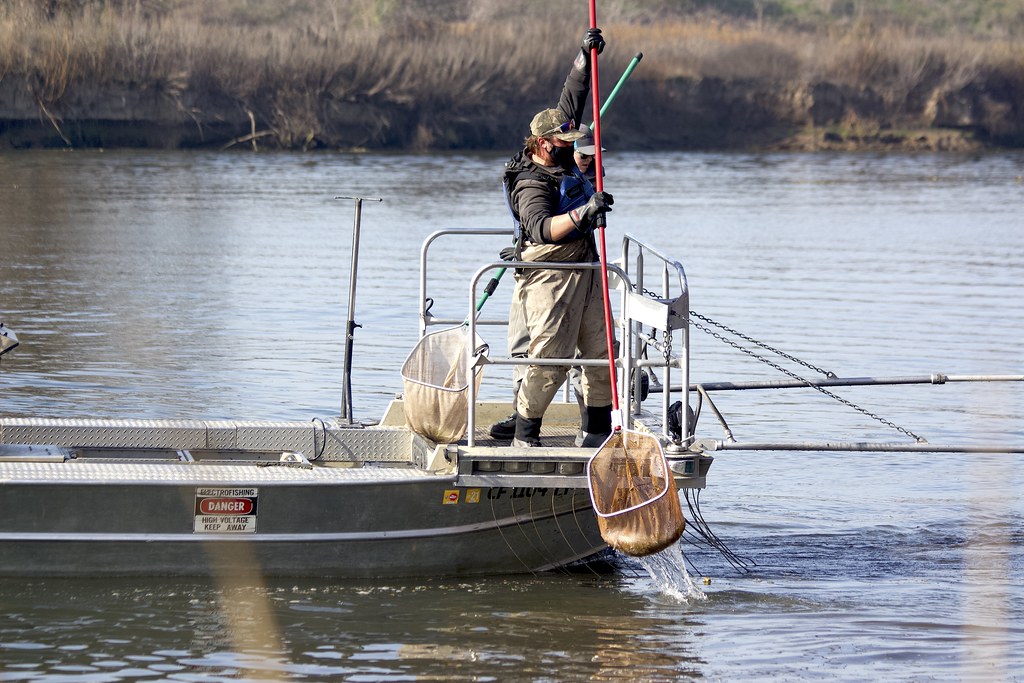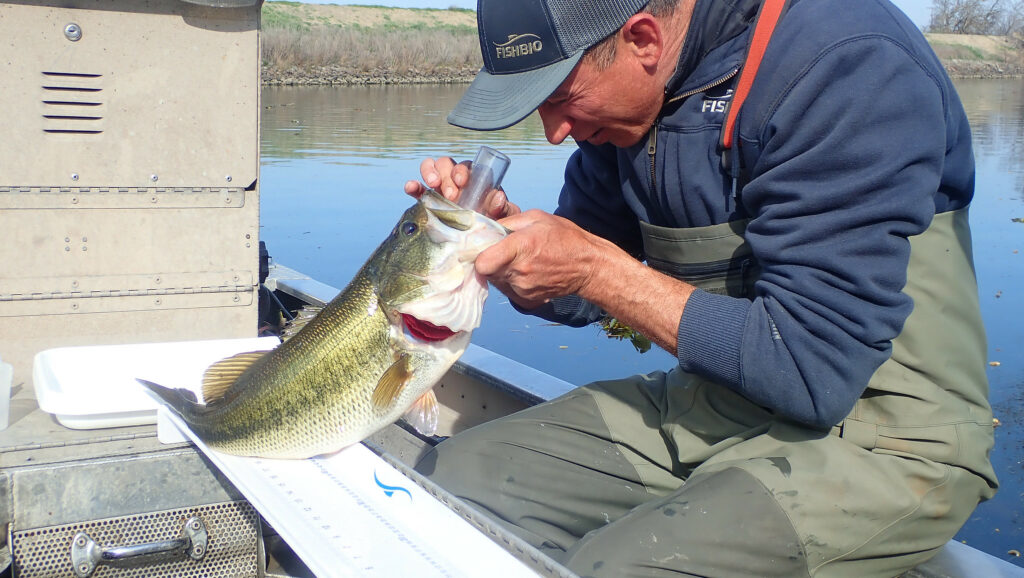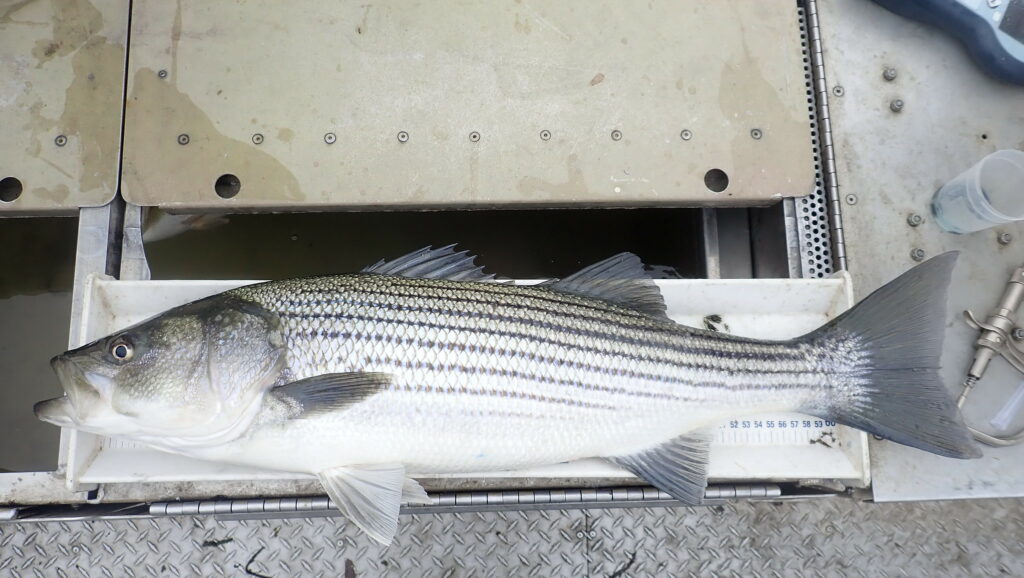Monday October 10, 2022

Recent research has established that very few juvenile Chinook salmon (Oncorhynchus tshawytscha) survive the migration from their birthplace in California’s Central Valley tributaries, through the Sacramento-San Joaquin Delta, and out to the Pacific Ocean. Records from rotary screw traps on the Stanislaus and Tuolumne rivers show that most young salmon do not even make it as far as the San Joaquin River, still hundreds of miles away from the Golden Gate Bridge. Numerous elements contribute to the low survival of juvenile salmonids, including habitat alteration, pesticide pollution, and predation by non-native fish. Most ongoing restoration efforts attempt to lessen the burdens that juvenile salmon face by improving their rearing habitat, controlling pollution, and adjusting river flows. However, despite these restoration efforts, juvenile salmon abundance and survival have continued to decline. Reducing interactions between juvenile salmon and non-native predators could prove to be an effective restoration approach, but achieving this can be remarkably difficult.

Over the past two years, FISHBIO has been conducting boat electrofishing to assess the fish community throughout the South Delta and to collect data on the abundance, distribution, and diets of non-native predators in key salmon migration corridors. Up to twenty different strategically selected sites are sampled every month from January through August each year in three major South Delta migratory corridor regions: Grant Line Canal, upper Old River, and the lower San Joaquin River from its confluence with the Stanislaus River to Stockton. The target species in this study include striped bass (Morone saxatilis), black bass (Micropterus spp.), channel catfish (Ictalurus punctatus), white catfish (Ameiurus catus), and Sacramento pikeminnow (Ptychocheilus grandis; a native species). When fish are captured, they are implanted with a passive integrated transponder (PIT) tag, making it possible to determine if the same individual is recaptured in the future. The ability to recapture marked individuals allows for estimations of abundance, and also provides information on annual and seasonal movement and growth. Further, diet samples are collected from each captured fish over six inches long to reveal their diet preferences. Video footage collected during this study is used to categorize each site by habitat type, and to rank the amount of submerged aquatic vegetation, as underwater plants are known to be important habitat for non-native predators. This habitat data will be used to characterize the environments where each predatory species is most likely to be found.

So far, electrofishing has been conducted at 290 sites throughout the South Delta, resulting in the capture of 3,804 individuals of the target species. Across all sites, electrofishing captured an average of 1.5 non-native predators per minute (Figure 1), suggesting that these species are abundant in the assessed sites. Preliminary findings from the study have shown that largemouth and striped bass are distributed throughout all of the salmon migratory regions, but the number varies by location and season. Largemouth bass tended to reside predominantly in the same locations, and some individuals were recaptured up to four times at the same site. However, a few largemouth bass were recaptured or detected on PIT tag antennas up to 20 miles away from their original capture locations. Striped bass, on the other hand, were not frequently recaptured during this study. This lower rate of recapture is likely due to the highly mobile nature of striped bass, but future detection of tagged individuals at PIT tag antennas, in long-term surveys, or by other predator research projects, may help uncover their seasonal movement patterns. Genetic and visual analyses of the diet samples have not yet detected any Chinook salmon, but 43% of collected gut samples contained other fish, including both native and non-native species. The habitat data shows that a large amount (44%) of the study area is inundated with submerged aquatic vegetation, and the few locations without this vegetation typically have low numbers of non-native predators present.
Figure 1. Number of individuals of target species caught per minute of electrofishing each month.
Despite significant investments and habitat restoration efforts, non-native predators are thriving in the Delta, while juvenile salmon still struggle. This project aims to provide critical information on the distribution, population trends, movements, habitat preferences, and diets of these non-native predators in the South Delta, which may be vital for guiding effective restoration activities related to juvenile Chinook salmon in the Delta. For instance, habitat modifications informed by this study could prove useful in decreasing juvenile salmon and bass interactions. The observed relationship between largemouth bass and submerged vegetation suggests that removing these plants at locations where salmon and bass commonly overlap could be an effective method for reducing salmon predation. FISHBIO’s ongoing research will hopefully contribute to regional solutions and targeted management actions that can have a tangible impact on juvenile salmon survival when and where it matters the most.
This post was featured in our weekly e-newsletter, the Fish Report. You can subscribe to the Fish Report here.
